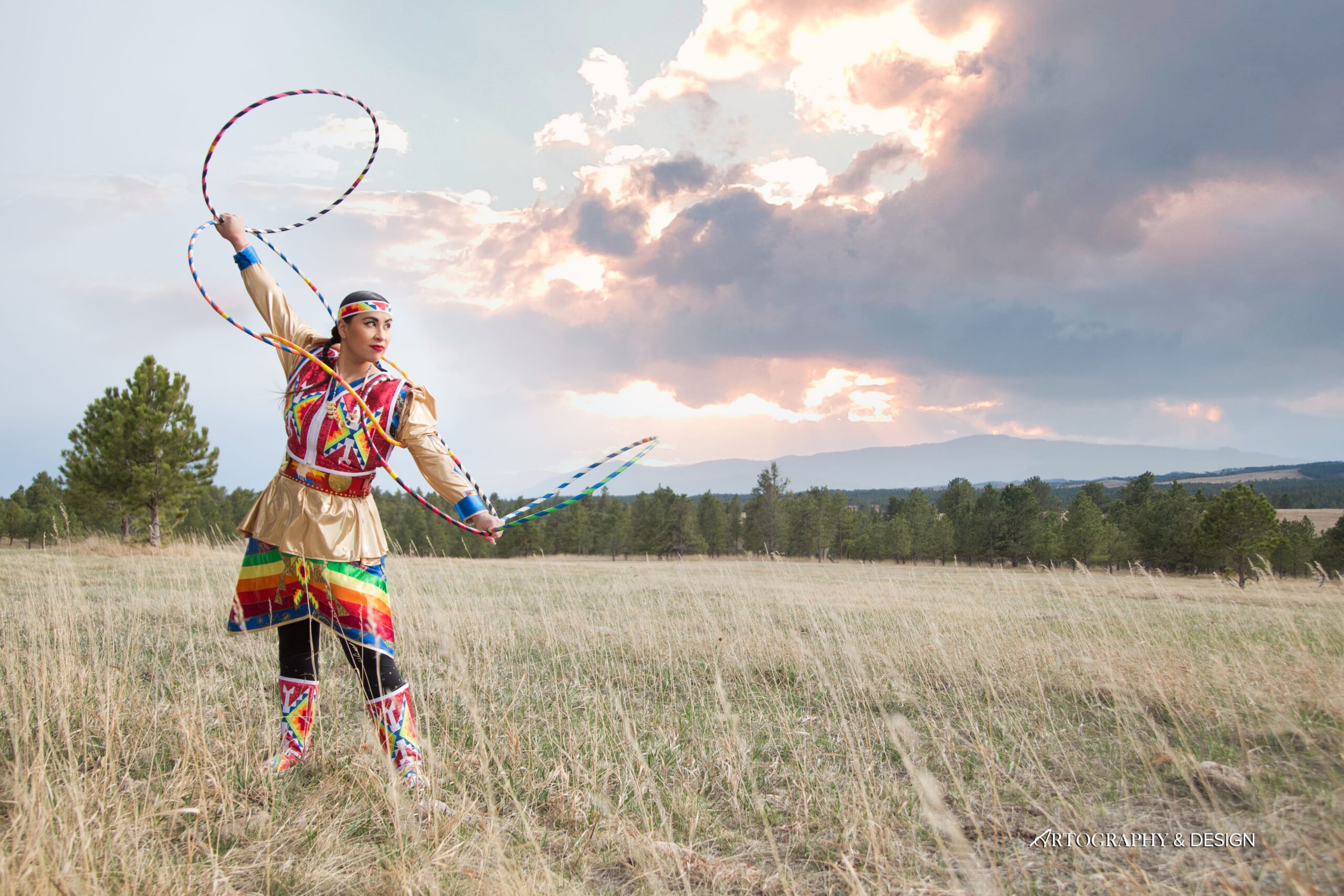For Starr Chief Eagle’s people, the first hoop was a horizon.
“When we came to this world, one of the first things that we saw in nature itself was a balance,” she told Arts South Dakota: a balance between Father Sky and Mother Earth. “We put our finger to the horizon line, and we actually followed it with our finger and it made a hoop around us that follows us wherever we go.”
Hoop dance, which is practiced by numerous Indigenous communities throughout North America, is an art form — and much more.
“In the dominant immigrant culture, music is often practiced as entertainment,” Kevin Locke said in an interview quoted in Arts Alive. “It is used to escape one’s everyday, mundane reality. In traditional Indigenous culture, one could say that music and the arts in general are used for the opposite purpose — to connect with reality.”
Kevin Locke was a Lakota and Anishaabe hoop dancer, musician, and educator. He died in 2022, leaving a legacy of storytelling and cultural connection that a new generation of hoop dancers are continuing.
Starr Chief Eagle, an enrolled member of the Sicangu (Rosebud) Lakota Sioux Tribe in South Dakota, grew up in the Black Hills and began to hoop dance even before she could walk.
As she entered adulthood, Starr Chief Eagle was given the Lakota name Wichahpi Ohitika Winyan, or Brave Star Woman. Today, she is one of the Midwest’s best known hoop dancers, part of a generation of women bringing their talents to what was originally a male practice.
STARR CHIEF EAGLE“Each hoop dancer that displays the hoop dance is telling their own individual story. It also sends a message from oneself to all of creation.”
Though norms are changing, men hoop dancers continue to outnumber women: Starr Chief Eagle was “one of the few women competitors present” at the 2023 World Championship Hoop Dance Contest, according to her website.
“In my hoop dance, I tell my own story. The first hoop is me being born,” Starr Chief Eagle told Native Hope. “The animals, the shapes, the creatures represent all the different stages of my life … everything I went through to be here today. The last and final creation represents my future goals — that person I am becoming.”
In a 2018 TEDx presentation at the University of South Dakota, Starr Chief Eagle spoke about the significance of hoop dancing and demonstrated her extraordinary facility: joining hoops to shape forms that she carried, wore, and positioned as a form of storytelling that goes beyond words.
Starr Chief Eagle is active as an educator, regularly traveling to teach schoolchildren and members of the public about hoop dancing and other art forms such as beading and sewing. Participants gain a new depth of knowledge about Lakota culture, and find their own empowerment in self-expression.
“Each hoop dancer that displays the hoop dance is telling their own individual story. It also sends a message from oneself to all of creation,” Starr Chief Eagle told Arts South Dakota.
“Hoop dancing is a very important part of myself,” she continued, “and that’s why I like to express it: because I feel like I have a story that’s worth telling.”
